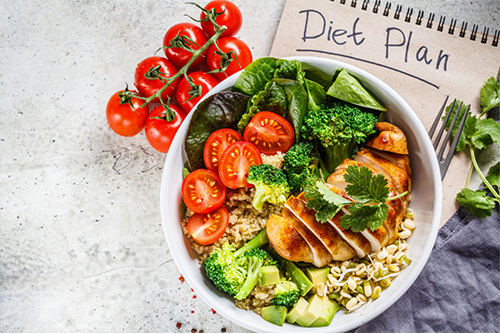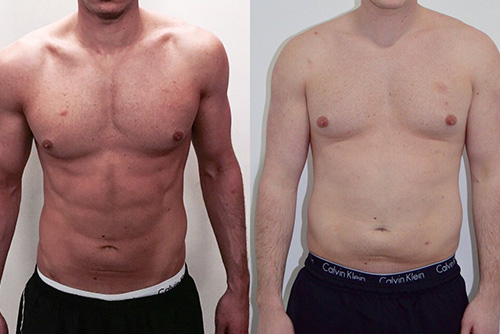
WELCOME TO Get Quantified
There are infinite diet options available these days. If you would like some evidence to back this statement, try googling “fat loss diet”.
New diets that promise to help you lose fat, build muscle, and increase performance pop up online nearly every day. Some diets eliminate whole food groups while others focus on consuming those same food groups solely.
We, going with the Physics -First law of thermodynamics: Energy can neither be created nor be destroyed, it can only be transferred from one form to another. This is how our body functions.
😊
Diets vary quantitatively across one or more of the following principles
Calorie Balance
How many calories you eat per day relative to how many you burn.
Macronutrient Amounts
How many grams of protein, carbohydrate, and fat you eat per day Nutrient.
Timing
When and how you spread your total food intake across daily meals.
Food Composition
The sources of macronutrients you consume.
Supplement use and Hydration
How much and what type (if any) dietary supplements you consume and your level of hydration.
We qualitatively consolidated data from these investigations and came up with estimated relative effect sizes for the five principles of dieting :
- Calorie Balance ≈ 50%
- Macronutrient Amounts ≈ 30%
- Nutrient Timing ≈ 10%
- Food Composition ≈ 5%
- Supplements and Hydration ≈ 5%
Again, these percentages only apply to the extent that an individual adheres to a given diet.
If you run a diet based only on calorie balance, you might expect to get about 50% of the potential effect of the diet on body composition and performance. On the other hand, if you based your diet on both calorie balance and proper macronutrient intake, you could get about 80% of the diet’s potential results. If you took all the right supplements and ate only healthy food options, but did not worry about macronutrients, timing, or calories, you could not expect more than about 10% of the potential positive outcomes from the diet.
Thus, we provide the best suitable Diet and training plans for the individual based on their goals with respect to their phases they belong to :
Fat Loss Phase
A period of dieting for the purpose of losing fat. A common secondary goal on such a phase is to minimize muscle loss to the greatest extent possible.
Muscle Gain Phase
A period of dieting for the purpose of gaining muscle. A common secondary goal on such a phase is to minimize fat gain to the greatest extent possible.
Post-diet Maintenance Phase
Phase Also known as a “diet recovery phase,” this phase occurs after a fat loss or a muscle gain phase and its purpose is to maintain the changes made to body composition during the preceding diet. This period involves easing back into normal eating, slowly moving out of the deficit or surplus created by the previous phase. The purpose of this phase is also to reset metabolic and psychological homeostasis at a new body weight and establish new settling points. Post-diet maintenance begins at the end of a fat loss or muscle gain diet and its duration will depend on the degree to which body weight and metabolism were changed by the previous phase. At the conclusion of post-diet maintenance, one can begin another weight changing phase or move into long term maintenance of the current weight.


Long Term Maintenance / Balance Phase
In this phase of dieting, the individual’s physiology and psychology have adapted to the current state of the body. This phase typically starts after the post-diet maintenance phase and can last as long as the individual would like to maintain their results and live a healthy, active, and balanced life.
High Volume Hypertrophy Training
High volume hypertrophy training is needed to maintain muscle mass on a fat loss diet or increase muscle mass on a muscle gain diet. It consists of resistance training composed of multiple sets of exercises (8-20+ sets per body part per week), mainly in the 6-30 repetition range. This resistance training is ideally mainly composed of compound basics like squats, bench presses, rows, and so on––lifts that engage multiple joints and whole muscle groups.
Low Volume Strength Training
Low volume strength training increases strength and power without changing muscle size. It is composed of fewer sets (5-15 per body part per week), usually in the 1-8 repetition range. This type of training is conducive to maintaining muscle during post-diet or long-term maintenance phases. This type of training has the added benefit of making the muscles more sensitive to the muscle growth effects of high-volume hypertrophy training for another fat loss or muscle gain diet.
Above all, we will evaluate and provide the customized diet and workout plan based on your Body Composition and goals and further monitor the progress on a weekly basis and update the necessary changes to your regime to get the best out of you.
Whatever package you choose, One-on-one Coaching is our speciality.
Our Mission
Our vision is to transform 100000 people by 2025 and share my research methodology with every individual in this fitness journey.
Copyrights - getquantified Designed by Creative Designs | Privacy policy







